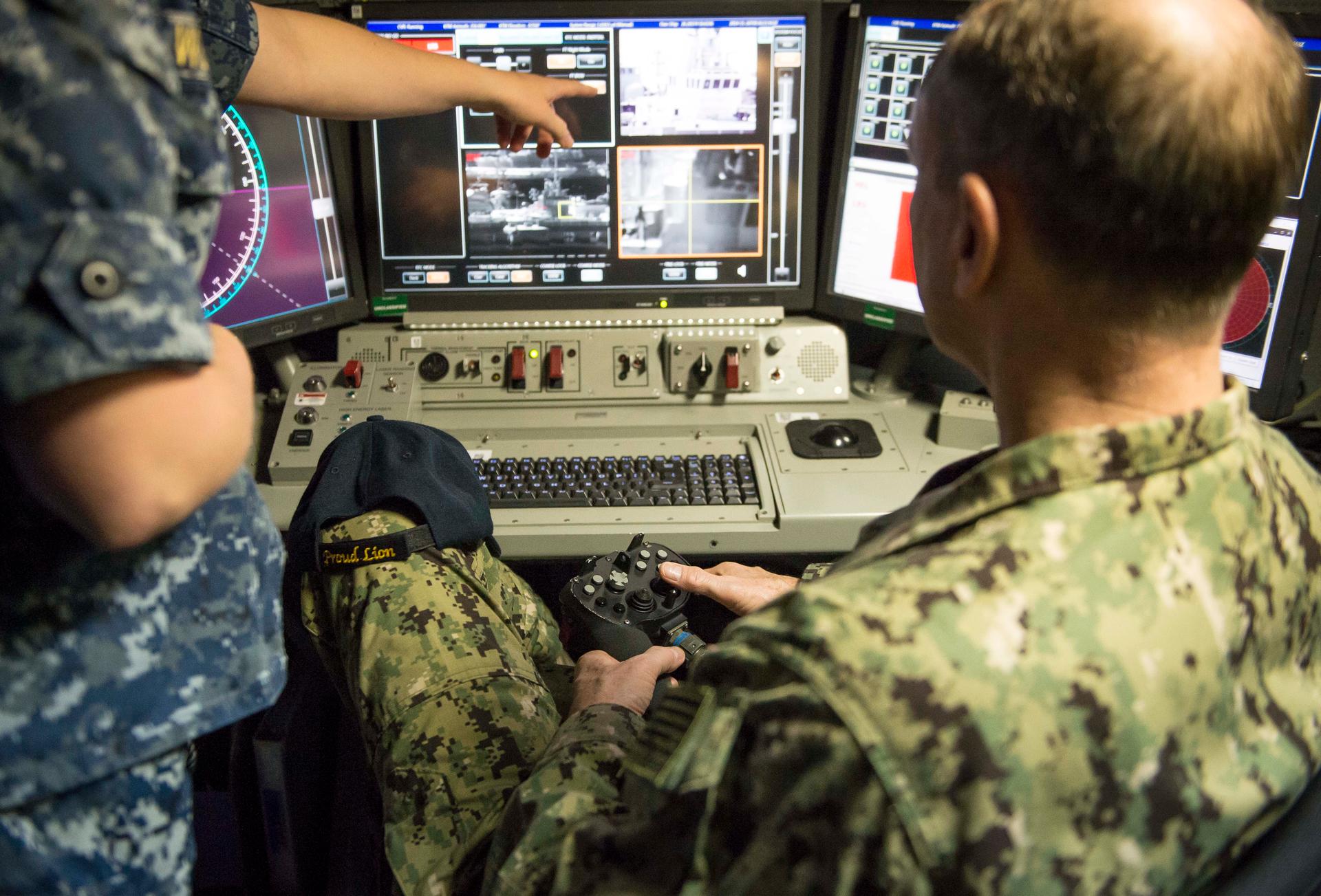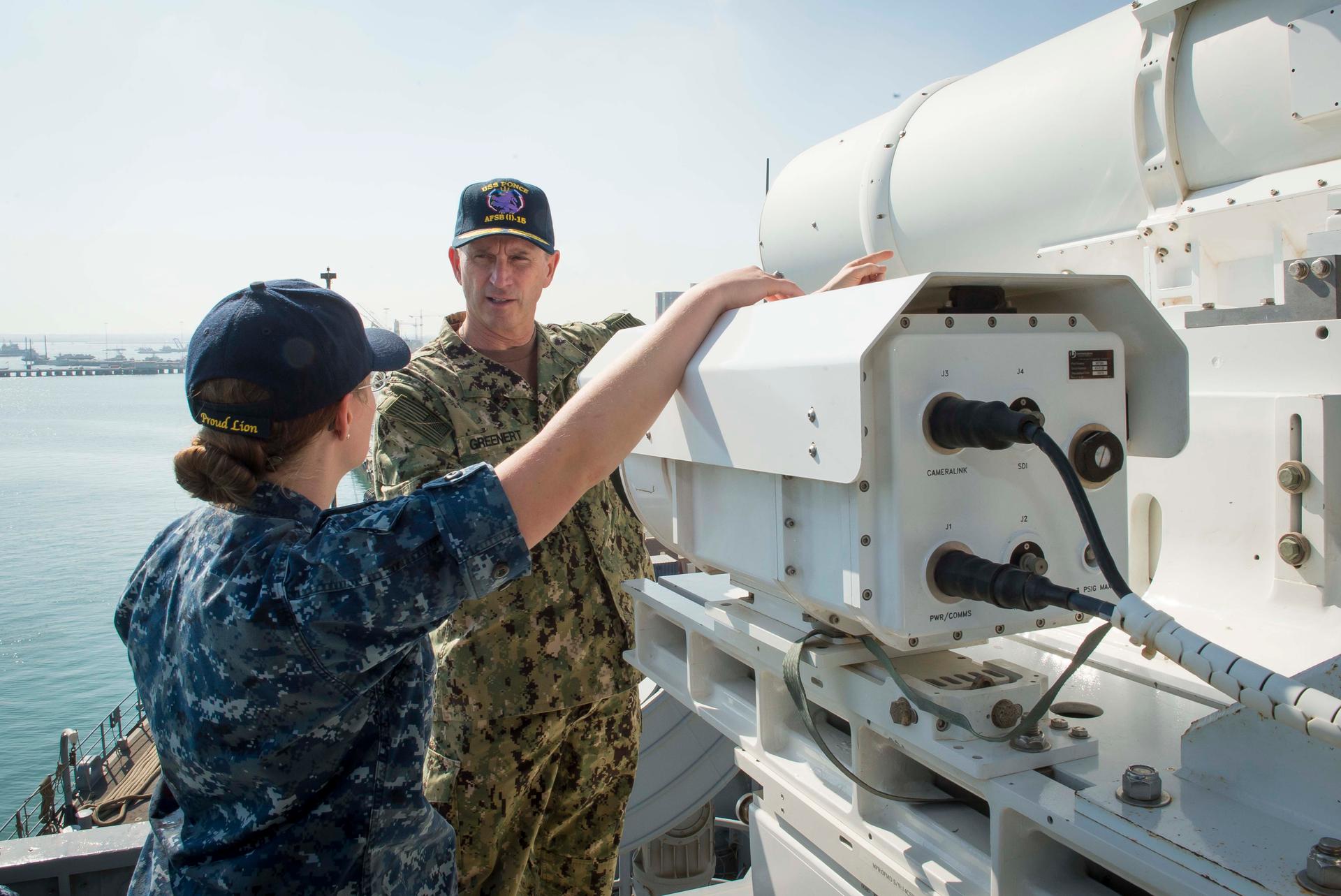Is that a US Navy ship or a Star Destroyer?
US Navy officers with the laser weapon on the USS Ponce.
It's time to stop obsessing over that lightsaber in the new Star Wars trailer: The US Navy is here with a giant laser that puts any Jedi to shame.
The Navy released pictures of its new Laser Weapon System, or LaWS, which has been deployed for the first time. It’s mounted just above the bridge of USS Ponce, which is currently sailing the Persian Gulf.
The LaWS is designed to destroy targets like drones or attacking speedboats, but it won't be taking on actual enemies quite yet.
“It’s very much a prototype," says Richard Scott of IHS-Janes, a defense industry news service. "[But] it’s the first time the US Navy — or any navy, for that matter — has taken a high-powered laser weapon to sea. They’re trialling the system aboard the Ponce really to try and understand and characterize what benefits a system like this could have.”
The system has already been successfully tested from the deck of USS Dewey, which tried out LaWS in 2012. Sadly, there's a disappointing catch to the footage of the test: You can’t see or hear the beam. There’s no sound other than the hum of the generators needed to supply the energy.
“Sorry to disappoint you,” Scott says, “but you don’t get the Star Wars effect.”
But there are real advantages over conventional weapons, if not movie ones. “The big one is cost," Scott explains. "While it’s costing a lot of money in research and development to get the science and technology into the right place, once you’ve fielded these weapons, they’re actually relatively cheap to use. … You’re spending really just a few cents every time you deliver a pulse from a laser.”
Compare that to a weapon like the like much-used Tomahawk missile, which costs well over a million dollars every time it's fired in combat.
Carrying fewer missiles also means added safety — there are fewer explosives on board — and big weight savings, a key consideration at sea. And as long as you have power, you can’t run out of ammunition.

One concern is what happens if a laser pulse misses its target. Risks could include collateral or environmental damage, but they're still being researched.
The weapon is only considered useful against drones and speedboats for the moment, but that could change.
"Researchers see the potential being much greater," Scott says. "If they can scale up the powers on these weapons, then they might see them perhaps in the future being able to take out anti-ship cruise missiles, or even ballistic missiles as well.”
